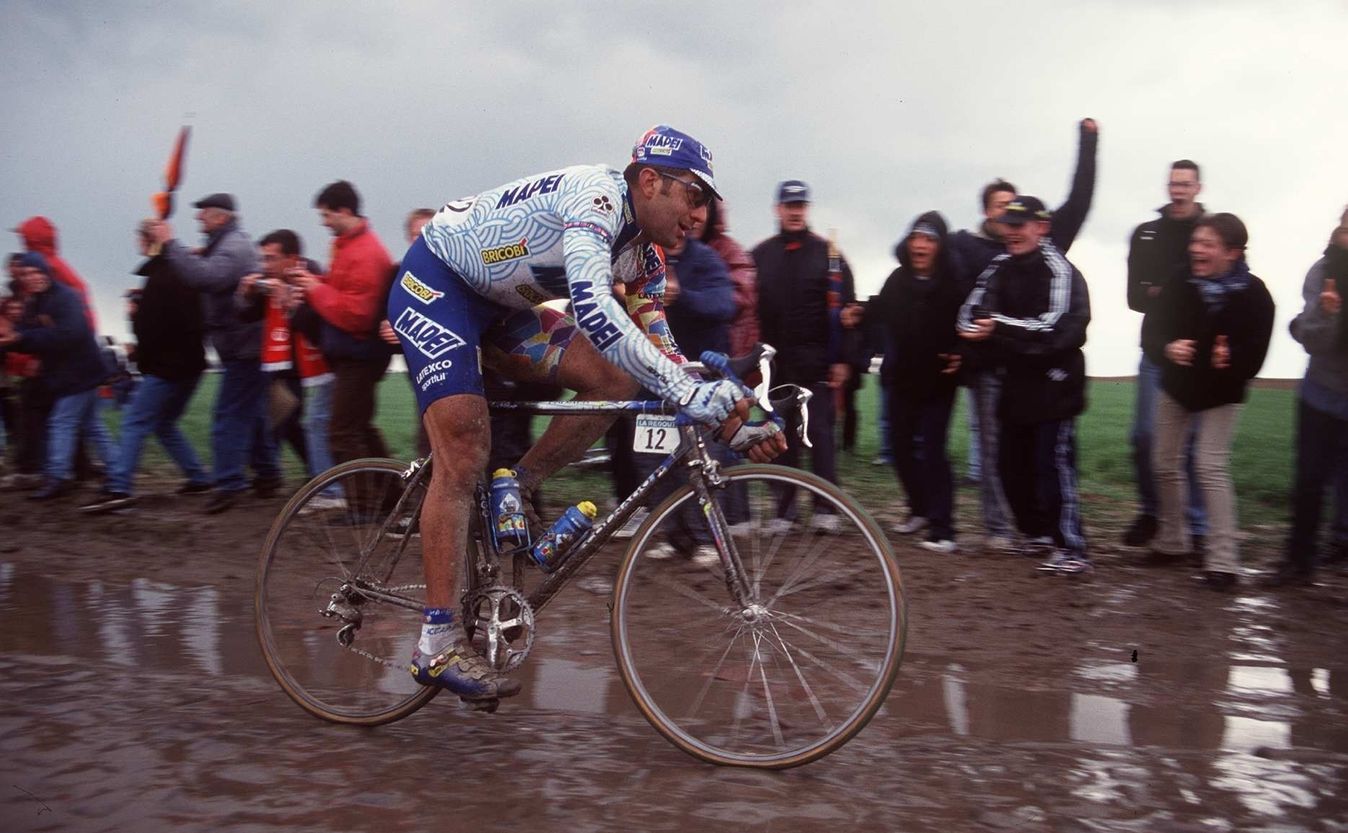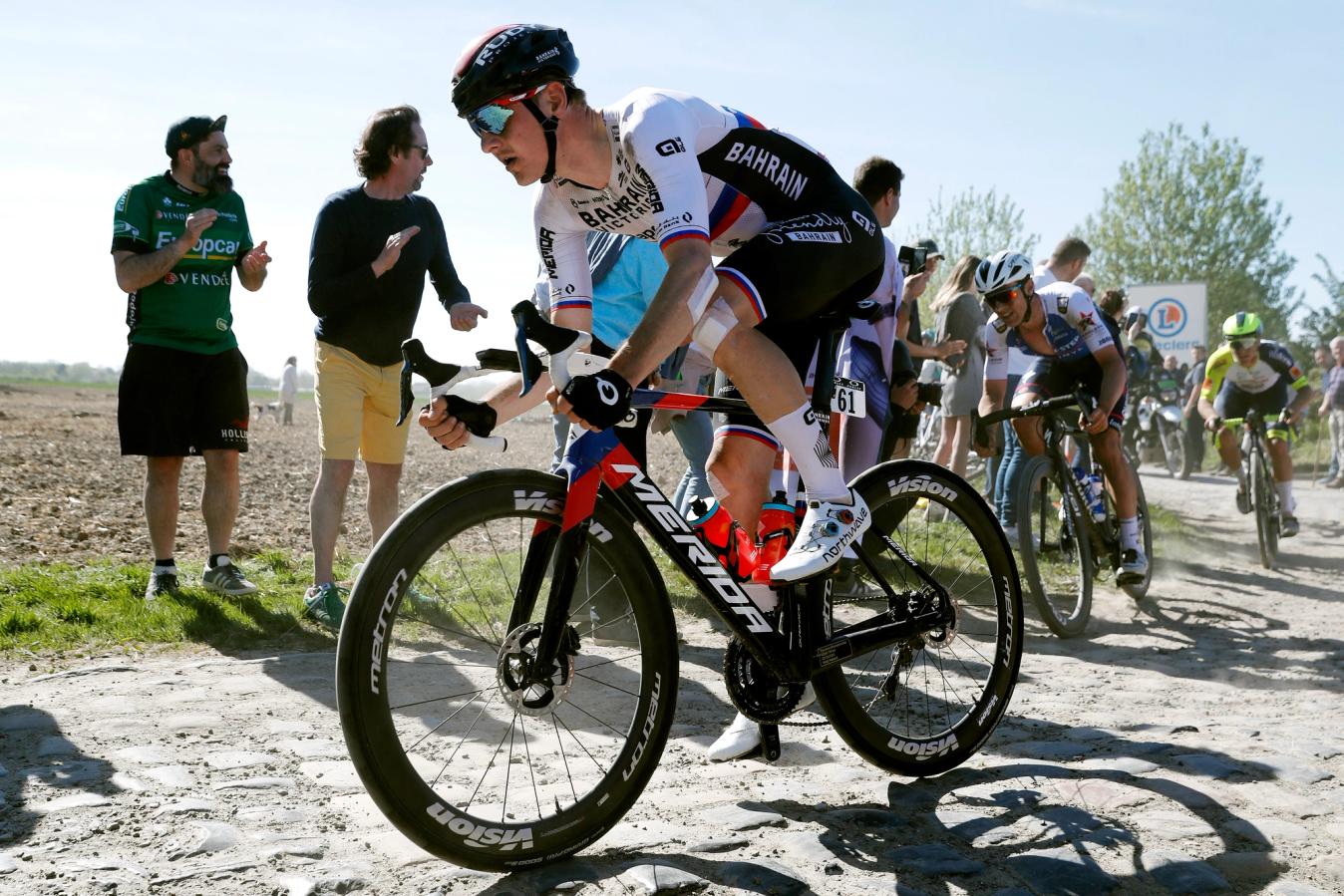If wider road bike tyres are better, why not go super wide?
GCN's 'Hank' and Alex Paton test out 26mm, 35mm and 50mm tyres in Cheddar Gorge
George Poole
Junior Writer
Skinsuits, neck socks and flared handlebars: the pursuit of aerodynamic gains has known seemingly known no bounds over the last two decades.
But whilst Team Sky rocked up in the early 2010s sporting groundbreaking new threads, the equipment in the professional peloton arguably took a while to catch up. Throughout much of the last decade, the tyre of choice was largely on the thinner side, with 26mm often seen as wide in itself. These days though, are long gone, with the age of the wider tyre upon us.
It is now apparently common wisdom - unless your name is Andrea Tafi, as we found out in our GCN+ original film - that wider tyres offer lower rolling resistance, a more comfortable ride and greater resistance to punctures. Gone are the days of 23mm and nothing else, and in come the 30mm+ options.
In light of this, GCN's James 'Hank' Lowsley-Williams and Alex Paton ponder the question: if wider road bike tyres are better, why not go super wide? In pursuit of answering this question, we sent our resident tech head, Alex, along with our chief investigator, Hank, to Cheddar Gorge in southwest England.
Their mission was clear, to test out three sets of tyres - 26mm, 35mm and 50mm - and discover which of them rode the fastest down one of southern England's most enjoyable descents. In order to make things fair, all three set of tyres will be run at a different pressure - with the correct pressure for each different width relative to Hank's body weight.
That way, we should ensure that each tyre feels the same firmness and performs as best as possible. Hank is running a Canyon gravel bike so as to have the clearance required to run tyres from 26mm to 50mm. With all that prepared, all that was left to do was to send Hank down Cheddar Gorge over and over again until our experiment was complete.
Let's see how he got on.
What difference does tyre width make to Hank's cornering?
Hank and Alex chose one particular bend on Cheddar Gorge to test the former's cornering, as he swung his body into a left-hand bend. The 26mm tyres were tested first by Hank, before the 35mm and 50mm. But halfway through the experiment, one thing is already becoming clear: thicker tyres offer for much more confident cornering.
"I've got to say, a lot more confidence than the 26s, I can come in with more speed and I just know I have got more grip," reflected Hank after having ridden the 35mm tyres.
This confidence was only bolstered when heading downhill on the 50mm tyres, which almost look like car tyres, such is their width as opposed to the thin, traditional set-up that Hank first tested out. Although confidence through cornering is not everything - and that will show itself in the speed test - the super wide tyres certainly pass the smell test when it comes to a greater body lean into the bend.
With Hank and Alex back in the GCN megabase to analyse their results, the still images from each tyre width demonstrates that both Hank's body and his bike are leaned at a steeper angle into the bend on the 35mm and 50mm tyres. Hank's body language is much more aggressive on the wider tyres as he seeks to squeeze out every advantage he can do from the bend.
Such confidence stems from the greater contact patch the tyres are making on the road, which is physically giving him much more grip and the feeling that Hank could push the bike much further.
"Whether or not it's faster, I don't know - and we're going to find out shortly - but nevertheless, it gives you a huge amount of confidence when you have got more tyre under you on tarmac," was Hank's conclusion.
"100%, The 50mm tyre [gave me the most confidence to lean]. I felt like I could lean it in, I had more confidence, I had more grip and I don't even think my [guts] allowed me to get the most out of the 50mm."
The same was said for the 35mm, with Hank feeling that there was even more performance to come out of the wider tyres.
Hank's summary is one shared by much of the professional peloton, who have quickly adopted the use of wider tyres in recent years. And nowhere has this change been more apparent than on the rough terrain of Paris-Roubaix. To look back now to the days of yore and see riders tackling the cobbles of northern France on thin tyres will give people the shakes - but it really did happen.

© Velo Collection (TDW) / Getty Images
On a particularly wet and muddy edition of Paris-Roubaix, thin tyres were the norm until the 2010s
Whole articles can and have been written on the evolution of bike tech in Paris-Roubaix, but one of the most striking changes has been in tyre width. In the 1980s and 1990s, it was all too common to see the whole peloton riding on 21mm tyres, with 23mm only coming in the early 2000s.
These days, there is a general consensus amongst the WorldTour peloton that 28mm tyres offer the best performance throughout much of the season, with 30mm tyres adopted for Paris-Roubaix due to their efficiency with a lower tyre pressure - therefore making for a smoother ride and one much less susceptible to punctures. But some riders have even been racing with 32mm tyres in recent years, which is remarkable given the amount of time spent on tarmac, even in the cobbled Classics, and the use of thin tyres as recently as the early 2010s.
If Hank lacked confidence riding down the buttery-smooth descent of Cheddar Gorge on 23mm tyres, imagine what it must have been like riding - in fact, racing - over the toughest roads in Europe on such a set-up. Rather them than us!
Are thicker tyres faster when descending?
The conclusions from Hank's cornering experiment were pretty clear. The 50mm tyres invoked the most confidence in the rider and allowed for a more aggressive body lean into each bend due to the greater contact point between the tyre and tarmac. However, confidence is not the only factor which determines whether a wider tyre is the right option for you. Indeed, many cyclists will understandably be looking for the tyre that will give them the most speed, not only on the flat, but also when descending.
Therefore, we sent Hank back up to the top of Cheddar Gorge and challenged him to set his quickest descent on each sets of tyres, from 26mm to 35mm and 50mm.
Clocking up speeds in excess of 40km/h, Cheddar Gorge is one of the most sweeping descents in southwest England and is the perfect place to test each tyre over a circa two-minute effort.
For all the positives of the 50mm tyre found in the cornering test, over a prolonged descent, its downsides soon became clear to Hank.
"It was a lot more cumbersome, you could feel the weight of it and just to lean it over, takes a bit more of an effort," he admitted. This conclusion was reflected in the results.
Time to descend Cheddar Gorge with each tyre width
- 35mm - 1:58
- 50mm - 2:02
- 26mm - 2:04

© Velo Collection (TDW) / Getty Images
Matej Mohorič was one of the favourites riding the 2022 Paris-Roubaix on 32mm tyres
Which tyre width is best?
Tyre width is, of course, a personal choice, and it often changes by generation. Those brought up before the 2000s may well stick to their guns and adopt for a thinner tyre, which was seen as the 'racer's choice' and offering the maximum speed.
However, such beliefs have been shaken in recent years by the discovery that although wider tyres offer a greater contact area with the road and therefore more traction, this results in a lower rolling resistance when run at lower pressures. Whilst this had us wondering if super wide tyres are the way to go, Hank's experience at Cheddar Gorge made him prefer the middle ground.
When asked by Alex which of the three tyre widths would be his choice going forward, Hank had the 35mm tyres earmarked.
"I think I would go for the 35mm, just because the 26mm were slightly uncomfortable to ride having been on the fatter tyres. And the [50mm] was the most comfortable, it gave me the most confidence but it did just feel cumbersome and slow. The 35mm was just that good middle ground."
So, are 35mm tyres the way forward? Not necessarily.
35mm tyres are wider than what most road bikes have the clearance for, hence the need for Hank to run a Canyon gravel bike. We must also acknowledge the impact of weight, aerodynamics and tyre rubber compound - as the width of a tyre is not the only important factor when deciding on how to kit out your bike.
But what this experiment did tell us that on the whole, it would be a good idea for many riders - including you, Andrea Tafi - to consider adopting a wider tyre than would usually be preferred. This may improve the control and comfort when riding, whilst even offering a greater overall riding speed.
What width tyres do you run, and why? Let us know in the comments below!
.jpg?rect=957,780,3097,3060&w=600&auto=format)











